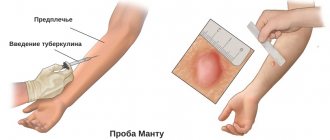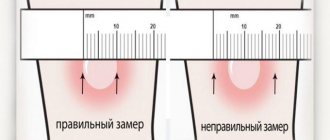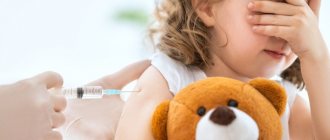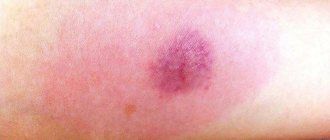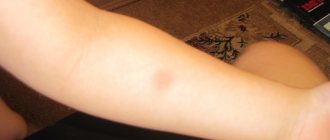An increase in body temperature in babies after mantoux occurs often. There can be many reasons for this. Read more about this issue below.
To determine tuberculosis infection in children, the Mantoux test is used. It is given to children and adolescents up to the age of seventeen. The active ingredient of this drug is tuberculoprotein (allergen). It is this that helps detect patients who have an infection in their body or are vaccinated. Mantu is done intradermally. Thanks to the reaction to the injected allergen, local, initial forms of a serious disease - tuberculosis - are detected in the early stages.
Why is it dangerous?
In case of chickenpox and high temperature, doctors categorically prohibit doing a test. However, there is evidence that sometimes the test can be done for a cough and a slight runny nose. Parents must decide for themselves whether to agree to this step or write a waiver of the procedure. At the same time, you should be aware of what consequences may occur if a child is given Mantoux after an illness or during the course of the disease:
- Incorrect test results. The patient's immune system may not respond correctly to the administered vaccine. The Mantoux test, if contraindicated, can give a false positive result. In this case, children are prescribed potent treatment in the absence of disease. To make sure the test results are correct, the doctor may order an additional X-ray examination, during which the body receives a dose of harmful radiation. If the result is false, children do not receive the necessary treatment.
- Possible side effects. The test itself does not lead to side effects (for example, cough after Mantoux). The exception is an allergic reaction. This is explained by the fact that the amount of tuberculin injected under the skin is minimal. However, with a cough and runny nose (if there is an infection in the body), a subcutaneous vaccine can worsen the child’s general condition. So the Mantoux reaction with a runny nose may be accompanied by fever or other symptoms.
Reasons for increased temperature reaction
The temperature as a reaction to manta rays can increase for a number of reasons. This condition always requires close attention from specialists.
Tuberculin intolerance
In this case, the immune system reacts to tuberculin. The injection site increases in size, becomes painful, and turns red. An inflammatory process with the formation of pus may develop. For children with such sensitivity to tuberculin, diagnosis of tuberculosis using this method is contraindicated.
Increased allergic readiness of the body
This condition in the form of an allergic reaction is possible in children with allergies. In this case, not only a reaction is observed at the site of the vaccine, but also a general malaise. The temperature reaction can range from low-grade fever to critical levels, and there may also be respiratory problems with rashes.
Infection of the body
After mantoux, the temperature may rise if there is a causative agent of a viral or bacterial infection in the body. If such diseases at the time of vaccination occurred in a latent form and were not diagnosed on time, then the temperature rises due to the rapid development of the infectious process against the background of a general weakening of the body.
Inflammatory foci in the body
The child may have an inflammatory focus in the body (chronic tonsillitis, sinusitis, inflammatory diseases of the teeth or teething). The temperature after vaccination will increase due to the activation of the inflammatory process, since a decrease in immunity provokes the development of the disease.
Inflammation at the injection site
Violation of hygiene standards leads to the development of inflammation at the injection site. This process will occur if the site of the manta reaction is combed or touched with dirty hands or rubbed with a washcloth.
Poor quality material for mantoux sample
If a child has been given a tuberculin test and the temperature rises after Mantu, in some cases this happens when low-quality material is used for diagnosis. The temperature from mantoux may increase if the storage conditions of the vaccine, as well as the production process for its manufacture, are violated.
What to do
If mild symptoms appear, you can alleviate the child’s condition on your own.
Symptomatic treatment is carried out. If Mantoux fever appears, it must be lowered.
How to shoot down
In accordance with age, a dose of antipyretic drug is given. It is recommended to lower the temperature if it exceeds the limit of +38...+38.5°C.
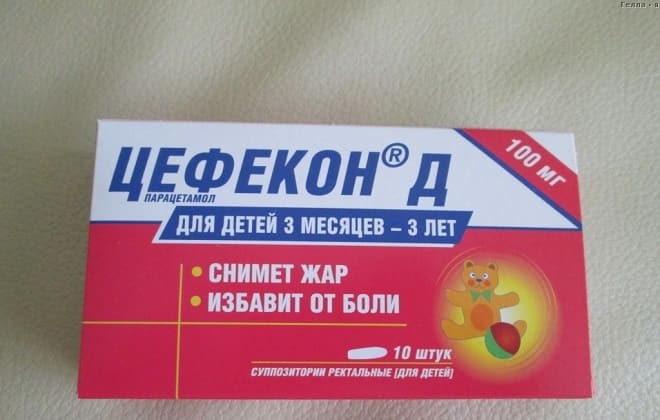
If the child is lethargic and prone to seizures, then the temperature should be lowered earlier - when it rises to +37°C.
Prevention
The Mantoux test is performed on children 2 times a year if they were not vaccinated with BCG in the maternity hospital. If the child has been vaccinated, the first Mantoux test begins at 1 year of age.
To reduce the risk of negative signs, the injection should be performed after checking the child’s condition - the temperature should be within +36.8°C. The likelihood of a reaction to Mantoux is reduced if the injection site is not wet for 3 days. The skin should not be scratched or scratched. It is not recommended to give an injection if there are signs of developing an infectious disease.
When should you sound the alarm?
If a child has a fever after the vaccine is administered, the reason for this needs to be found out. Hyperthermia, which is a reaction to a disease that is not associated with Koch bacilli, should not cause concern. You should worry in the following cases:
- after vaccination I developed a severe allergy,
- the papule turned red, hurt a lot and festered,
- the temperature does not decrease in any way with the help of medications,
- the body's reaction becomes unpredictable, up to loss of consciousness.
If a child’s temperature after Mantoux rises above 38.5 degrees and does not go down, then he should be hospitalized. To understand the reason for this, the child must be examined.
The puncture site should normally swell a little and thicken. The doctor knows all the acceptable sizes of redness on the arm and the degree of tissue compaction. But if the papule festers after vaccination, itches and hurts greatly, then the child should be urgently shown to a doctor. If symptoms of allergies and viral infections appear, the baby requires hospital treatment. The infection may become more active during the administration of tuberculin.
Preventive measures
How to avoid fever after Mantoux? In this case, the following recommendations must be followed:
- If a child has had a cold, even in a mild form, then after recovery you should notify your local pediatrician, as well as the nurse at the kindergarten or school.
- After Mantoux, the papule should not be touched or scratched for 72 hours. Parents should monitor their child to ensure that he does not do this. If it is difficult for the baby to resist this, the vaccination site can be bandaged or sealed.
- If parents were warned that a Mantoux test will be carried out in kindergarten, then in the morning they must measure the child’s body temperature to confirm the state of his health.
Currently, almost all preschool and school institutions ask parents for permission to conduct a mantoux test on their child. Now each person has the right to decide for himself whether the baby needs such an additional check. Mandatory vaccination is carried out only for children from disadvantaged families who are kept in inadequate conditions.
Can you get sick from the Mantoux vaccine?
Children most often fall ill from the drug with colds and allergies. When medical staff administer vaccinations, parents should always be attentive to their babies. Mantoux should not be given to children with recent illnesses. You risk getting sick again. And recovery will take a long time due to complications.
If you are allergic to the drug, it is better not to do Mantoux at all, but to use another vaccine - the Diaskintest test . It has a slightly different composition. Therefore, the drug has fewer irritants, and it acts more accurately.

Temperature after Mantoux
Why is Mantoux test done?
Doctors around the world insist on vaccination of newborns. The first BCG vaccination is done in the maternity hospital on the 3rd day (more details in the article: why is the BCG vaccination given?). Weakened Calmette-Guerin mycobacteria are introduced into the body to prevent severe forms of tuberculosis and its complications.
After a year, the child is given a Mantoux test to diagnose the disease. It is done with a small needle at wrist level. Mantoux is not a vaccine, but is intended to test how effective the vaccination was. The sample contains tuberculin. This is a small number of different antigens by which the doctor will determine the resistance of immunity to the disease. A reaction appears at the injection site - a slight inflammation caused by the work of immune blood cells. The introduced mycobacteria attract lymphocytes. The more redness, the more likely the reaction is positive.
It is impossible to say unequivocally about the presence of a disease, since the reaction can be influenced by a lot of factors that should be taken into account - this is the individual state of the child’s body, the dynamics of the tests, banal allergies, etc. (we recommend reading: for what reasons can a child be allergic to the Mantoux test?) . If there is a suspicion of tuberculosis, an experienced doctor will send the baby for further examination.
Important Pulmonary emphysema - what it is, symptoms and treatment
Every year, all children over 12 months of age are given a Mantoux test.
Factors under which Mantoux is not recommended:
- children under 1 year of age;
- presence of fever, ARVI, acute respiratory infections;
- exacerbation of chronic diseases;
- skin rashes;
- teething period.
Reasons for the increase in temperature after the Mantoux test
The temperature after the Mantoux test can rise for a number of pathological and other reasons:
- Improper storage of the drug, disruption of the vaccine production process. The material for subcutaneous injection may be of poor quality. The results of such an injection are unpredictable. This rarely happens. However, there is no need to be afraid of infection with tuberculosis: there are no live bacteria that can multiply in the human body in the composition of the drug. Tuberculin contains mycobacteria reduced to a weakened state. They are non-viable, but have properties to activate the immune response.
- Local inflammatory process. Violation of the hygienic rules for the administration of tuberculin can lead to local infectious inflammation with all the ensuing consequences: increased body temperature, symptoms of general intoxication, suppuration of the skin layers, up to the formation of phlegmon (an abscess in the fatty tissue).
- The presence of an inflammatory process in the body. Foci of chronic infectious lesions may become more active after the administration of the vaccine, because the load on the immune system increases. Exacerbations are likely as the thermometer increases, sometimes to significant levels.
- Allergic mood of the body. When tuberculin is administered, an exacerbation of allergies and, as a result, an increase in body temperature is possible - usually to the level of mild subfebrile condition (37.2-37.5 degrees). Temperatures from Mantoux may be higher. It all depends on the individual characteristics of the patient’s body.
- Immune reaction to tuberculin, intolerance to the drug. This is also possible. This is a different type of allergic reaction. The response can be of varying degrees of severity, even shock.
- Mechanical damage to the injection site, constant physical impact on the area (for example, when washing).
Temperature after Mantoux occurs more often in a child than in an adult patient. But options are possible. An increase in thermometer readings in older people is accompanied by characteristic signs:
- symptoms of general intoxication of the body;
- enlarged lymph nodes.
We can talk about both a specific reaction to tuberculin and concomitant pathologies.
In both adults and children, it is possible that the timing of the vaccine administration and the onset of a cold coincidentally coincide.
How many days does it usually last?

The temperature after the Mantoux test can last for different times. It depends on what caused its increase.
If hyperthermia is a normal reaction of the body, then it can be observed for several days after the injection. The fever goes away on its own without taking medications. But it is easy to get rid of it in a day if you give your child antipyretic medications.
With the development of an infectious-inflammatory process, the temperature can remain at a high level until competent medical care is provided.
Children prone to hyperthermia should be given antipyretics on the eve of the tuberculin test and for 2-3 days after it. This will help prevent the thermometer from rising.
Side effects of the procedure and possible complications
Just a few years ago, the body’s reaction to the Mantoux test could only be of a local type; side effects were observed in isolated cases in case of individual intolerance to the vaccine in a child. But every year the side effects appear more and more often and more clearly. And if earlier experts did not agree that the temperature could rise after injection as a result of the action of this particular component, now they no longer deny this possibility.
The temperature may rise after the test for several reasons:
- Increased sensitivity of modern children to various allergens due to decreased immunity, lack of vitamins, poor diet and daily routine, insufficient physical activity, after an infectious disease;
- Initially, elevated temperature due to slight inflammation or teething;
- Poor quality or expired drug. This is very rare and is observed immediately in a group of children who were simultaneously given Mantoux tests;
- If the test was performed on a child with a weakened immune system, this may reduce the body's resistance to influenza and viral infections. In this case, the temperature rises against the background of the underlying disease, and not in response to the action of tuberculin;
- An increase in temperature due to the onset of the development of the disease may simply coincide with the time of the test and have nothing to do with it.
Most often, the temperature after the Mantoux test in response to the action of the active substance increases in school-age children and normalizes within 1-3 days without concomitant treatment. The reaction may not be observed immediately, but a day after the intradermal injection. The condition should not be in the form of fever. If the thermometer readings are above 38°C, it is recommended to immediately contact a specialist
You need to pay special attention to the child’s condition if the fever is accompanied by:
- headache and dizziness;
- vomiting, disorders of the gastrointestinal tract;
- itching and skin manifestations in the injection area;
- swelling or episodes of difficulty breathing.
To avoid such manifestations after the Mantoux test, the following recommendations must be followed:
- Even if a child has suffered a mild cold, after recovery it is necessary to notify the local pediatrician and the nurse at school or kindergarten.
- For 72 hours, the “button” should not be scratched or touched. It is the parents who must ensure that this condition is observed. If the child cannot cope with performing it on his own, it is recommended to tape or bandage the test site (the main thing is that the bandage does not put pressure on the injection site).
- If parents are notified that a Mantoux test is to be performed in a child care facility today, the child’s body temperature should be measured in the morning to confirm his healthy condition.
Currently, most school and preschool institutions request parental permission to conduct such a test. Now each person has the right to decide for himself whether his child needs additional testing for the disease. Such events are mandatory only for children from disadvantaged families who are kept in inappropriate conditions.
Temperature
Cells of the immune system begin to produce biologically active compounds (prostaglandins), which affect the thermoregulation center in the medulla oblongata. The development of the reaction is determined by the individual genetically inherited characteristics of the child.
The development of intoxication during hyperthermia (a noticeable increase in temperature) is also possible after secondary bacterial infection of tissues in the area of administration of immunobiological drugs.
If you have a fever after the Mantoux examination, you should take a few simple steps:
In case of low-grade fever (not higher than 37.5 ° C), no additional measures are taken; the child is monitored.
- At a temperature of 38 ° C and above, children should be prescribed antipyretic drugs in an appropriate dose (Paracetamol, Ibuprofen).
- If the temperature rises above 39 ° C, the child’s general condition worsens with severe weakness, body aches, headaches and impaired consciousness, seek help from the doctor on duty.
- If a child has a fever after Mantoux vaccination, Komarovsky recommends the measures shown in the video. They are the same whether you have immunoassay fever or vaccine fever.
Causes of temperature after Mantoux
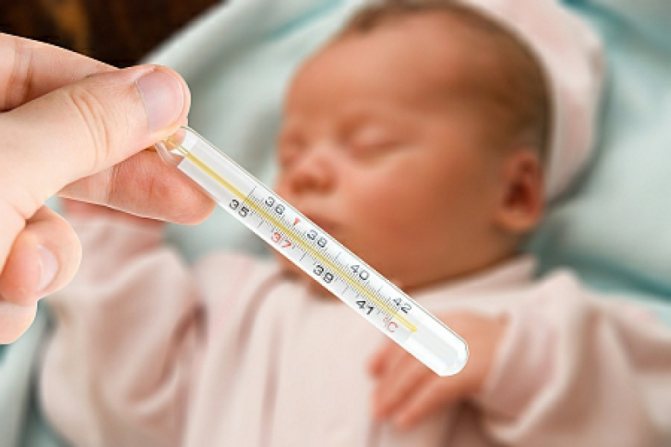
- Weakened body. Under no circumstances should a child who is sick or starting to get sick be subjected to this procedure. Even though the Mantoux test is one of the safest injections. The fact is that the immune system of any organism, in fact, does not care what to protect itself from. For her, any foreign substance or component that poses a potential danger is an “enemy.” The fight against “enemies” is often aggressive, and the reaction is not always predictable.
- Allergy. As mentioned above, the immune system, roughly speaking, does not care what the so-called “enemy” turns out to be; the main thing is to get rid of it as soon as possible. Whether it is a real virus, an infection or a simple allergen, there is not much difference. Tuberculin, already known to us, often turns out to be the allergen. In this case, a high temperature (more than 38 degrees) is accompanied by severe redness of the injection site, inflammation and, in the worst case, a decrease in blood clotting. Also, you should not send a child to Mantoux if an allergic reaction has already begun in his body. For example, if the baby is already sneezing from pollen, or suffers from redness of the skin due to the abuse of sweets or citrus fruits, you should refrain from this procedure. Often, the reason for the increase in temperature lies in the fact that the child contracted a common cold on the eve of the tuberculin test. In this case, the sample results will be considered invalid.
- The child has skin lesions (wounds, cuts), as well as other inflammations (erupting teeth). Many parents do not pay due attention to this factor, but in vain. After all, what is the inflammatory process? That's right, this is still the same reaction of the immune system to an invading infection. A wound or cut is nothing more than local inflammation, accompanied by a local increase in temperature, redness and acute pain. Under such conditions, introducing tuberculin into the body may not be advisable. Of course, this warning practically does not apply to minor injuries, but if a child has a large open wound, inflamed gums or other inflammatory processes are detected, perhaps not so obvious, it is best to refrain from performing the Mantoux test for a while.
- Infection. Everyone knows the rule for certain from childhood: you can’t scratch the manta ray! The fact is that rarely does anyone carefully monitor their hand hygiene in childhood. And all children love to touch, regardless of whether it is dirty or clean. In this case, it is very easy to introduce an infection to the injection site (in other words, to the site of damage to the protective tissues). This threatens infection of internal tissues and blood. And the first symptom of incipient sepsis is high temperature.
Important Instructions for the use of libexin muco for children, review of reviews and analogues
What happens if you make Mantoux at a temperature?
Doing the Mantoux Test when the patient has a fever is prohibited. Because the result of the injection will be false and there may be various unpleasant consequences.
To prevent this from happening, parents should pay more attention to their children. Do not let your child with ARVI or influenza go to school. If your baby is sick, visit a doctor and undergo a course of treatment. There is no need to leave everything behind because you are busy. After all, the health of the child should always come first.

Is it possible to make Mantu at a temperature?
How to avoid fever? Preventive measures?
Hyperthermia after the Mantoux test can be avoided. To do this, you need to follow these recommendations from experts:
- determine body temperature before the test; tuberculin cannot be administered if this indicator is above 36.8 degrees;
- It is forbidden to wash or scratch the injection site, it is advisable not to even touch it until the result is assessed, so as not to cause an infection (to prevent this, you can apply a tight bandage to the child’s hand);
- It is not recommended to do a test even if there is the slightest suspicion of infection, since this can aggravate the situation (this applies to colds, skin rashes, dermatitis, exacerbation of somatic diseases, which may be accompanied by hyperthermia);
- It is necessary to refuse the procedure if individual intolerance to the drug has previously been identified;
- if the procedure has already been postponed due to illness, then it can only be done after a week from the moment of recovery (it is even better to postpone the test for a month after recovery, and you can additionally consult with an immunologist about the possibility of taking the test, since reduced immunity can cause a false positive result and development of various pathologies);
- The reason for postponing the Mantoux test may also be teething, since this process itself is a strong burden on the child’s body, regardless of age.
In addition, it is recommended to temporarily exclude from the diet all foods that are potential allergens. This applies to citrus fruits, chocolate and cocoa-containing products, red fruits and berries. It is better for adult patients to avoid drinking alcoholic beverages, since ethyl alcohol can increase body temperature and cause allergies.
The injection site should not be lubricated with anything, including iodine and brilliant green. To avoid infection of the injection site and injury, it is better to avoid contact with animals. It is imperative to take care of body hygiene.
If a false positive result is obtained, a repeat test is recommended, but not earlier than a year later. In this case, no special preparation is required.
Who should not do Mantoux
As with any procedures, in particular vaccinations, there are children for whom the Mantoux test is contraindicated. They are determined by the composition of tuberculin serum, which includes, for example, the preservative phenol, which can cause an unexpected reaction in a child. You cannot test if:
- The child has skin problems, including those of allergic origin.
- The child is now at the stage of exacerbation of chronic diseases.
- The baby is registered for bronchial asthma.
- He experiences epileptic seizures or has convulsive readiness.
- There is active rheumatism.
- The baby shows signs of a viral infection: fever, runny nose, cough, sore throat and others.
- Those around the baby have exceeded the epidemiological threshold for any diseases, although the child himself may be healthy.
If some of these diseases are present, Mantoux can be postponed until the child gets better. Others are a lifelong contraindication. But if, nevertheless, the child’s temperature is normal, there are no signs of illness and the test is approved by the pediatrician, the question remains open: what will happen if you wet Mantoux?
For what reasons can there be an increase in body temperature?
An increase in temperature is the body's reaction to intervention.
And such a reaction can develop under the influence of various factors. The main reasons why this symptom may occur:
- Individual reaction to tuberculin. If there is an individual intolerance to this component, the body will try in every possible way to reject it, and the immune system will take an active part in such rejection. In this case, the occurrence of a symptom in the child will be observed after each test. This sign may be accompanied by an increase in the papule to a critical size, its suppuration and other symptoms. Such children should not be given Mantoux. There are other diagnostic procedures to assess the risk of developing tuberculosis.
- The child's tendency to allergies. An allergic reaction is also a response of the immune system to the invasion of allergens into the body. And tuberculin can be perceived as an allergen and cause a violent reaction, which will be accompanied by fever and other symptoms.
- Incipient disease. It is sometimes difficult to detect the onset of the disease. It happens that there are no external manifestations, but bacteria or viruses are already present in the body. In this case, the test will reduce immunity and pathogenic microorganisms will begin to multiply, which will provoke the development of an infectious disease. And many infections are accompanied by fever.
- Presence of inflammation. Inflammation can be observed in a child after illnesses, with banal cuts or during teething. And if at this stage you load the body with an injection, the inflammation may intensify.
- Using an expired or low-quality drug. Although rare, this does happen. In this case, the increase in temperature will be accompanied by a number of other alarming symptoms.
- Weakening of the immune system. After illnesses, the functioning of the immune system is disrupted, and if a Mantoux test was done during this period, bacteria and viruses that live in the body of any person (even healthy ones) can become active and begin to multiply.
- Infection through a puncture. If the child often scratched or touched the injection site with dirty hands, then tissue infection could easily occur.
When to sound the alarm:
- If the temperature has risen to critical levels (above 38°) and is difficult to control with antipyretic drugs.
- If the papule has greatly increased in size, festered, turned red and caused pain.
- If the increase is accompanied by symptoms such as muscle pain or headaches, diarrhea, loss of appetite, nausea or vomiting, deterioration in general condition, convulsions, weakness, fainting, clouding of consciousness, etc.
- If a severe allergic reaction occurs, accompanied by severe itching in the puncture area, swelling, and difficulty breathing.
Important Instructions for using omnitus syrup: how to take it for a dry cough, before or after meals, dosage, comparison with tablets and which is better among analogues
How to prevent complications after the test
To prevent an unwanted reaction after the manipulation, it is important to follow a number of simple rules.
- If you suspect a developing cold, put off Manta until you have completely recovered.
- If you have an individual intolerance to tuberculin, abandon this method and try another (diaskintest).
- Do not allow your child to touch the injection site.
- After an illness, wait 2 weeks before the test to normalize your immunity.
- Before the procedure, be sure to measure your temperature (the reading should not be higher than 36.8°).
- Do not do the first Mantu at 1 year of age during the period of active teething, wait until the light interval.
Remember that the temperature after the test can rise to 37.5 in 6-8 hours; it should go away on the second or third day. If the temperature jump is sharp or the thermometer shows high numbers, seek medical help to find out the cause.
Why is such a reaction of the body possible?
As mentioned above, the Mantoux test is not a prevention of tuberculosis; it diagnoses it, helping to determine the child’s body’s reaction to tuberculin. This reaction to Mantoux should manifest itself as slight redness of the skin in the area of the injection, the appearance of a papule and nothing more.
In order for the cause of the temperature increase to be correctly established, the following rules must be followed before the procedure:
- the baby must be healthy;
- the administered drug must be of high quality and storage conditions must be met.
So can the temperature rise after Mantoux? An increase in temperature after the test is rare. If this happens, then this moment should not be ignored. This fact suggests that there are pathogenic organisms in the baby’s body and it is imperative to find the reason for this reaction of the child’s body.
After the drug is administered in an amount of 0.1 milliliter, immune cells located in the body and “knowing” what tuberculin proteins look like trigger a reaction. Tuberculin is isolated and destroyed. Visually, this is redness of the skin at the site of injection of the sample. This is how it should be in a normal situation. Only the child’s body perceives this or that intervention differently, both depending on its individual characteristics and the presence of pathological processes. Hence the temperature on Mantoux.
Reasons for its increase:
- The child has an infectious disease. At the time of the test, the infection had not yet manifested itself. If, in addition to the temperature, the child suffers from a cough and a sore throat, then the problem is not at all with the injection;
- We made Mantoux immediately after the child got sick. The body is weakened, and the immune system is exposed to pathogenic microorganisms, albeit in a modified form, and reacts with an increase in temperature. The Mantoux test should be carried out at least two weeks after the baby has recovered, but it is best to wait for one month;
- The baby is teething;
- Allergies of any nature are present. In this case, the child’s body responds to tuberculin with an increased reaction. In this case, the reaction can be assessed as positive, but the child is not infected;
- Sensitivity to the drug and intolerance to it. In addition to high temperature, Mantoux can cause severe redness. Any time a child is given a Mantoux test, a severe reaction should be expected. To avoid this, another type of tuberculosis diagnosis should be used;
- When scratching, the baby introduced an infection into the wound. Therefore, parents need to carefully ensure that the place where the injection was given is not exposed to any physical impact;
- The injection was administered incorrectly, instead of intradermal administration, subcutaneous administration was performed and sepsis began;
- Poor quality drug (due to violation of manufacturing or storage technology). Although this reason is rare, it does occur. In this case, high temperature after Mantoux may be accompanied by vomiting and dizziness;
- The child’s body suffers from a lack of vitamins, poor nutrition, and immunodeficiency of various natures.
What symptoms should parents sound the alarm about?
If after Mantoux a child develops a fever, but there are no other symptoms, most likely no additional treatment will be required; in most cases, everything returns to normal without medical or drug intervention
Parents should pay attention to the following symptoms:
- the temperature after the Mantoux test rose above 38 degrees the morning after the day of injection, but it did not decrease even after taking antipyretics;
- the papule has increased to a critical size, with pain and suppuration present - this condition can signal not only an allergic reaction, but also infection with bacteria such as staphylococci or streptococci;
- fever, muscle pain, convulsions (most often this symptom appears in preschool children), clouding of consciousness;
- confusion of thinking processes;
- severe headache, which may indicate intoxication of the body;
- disorders of the gastrointestinal tract, for example, diarrhea, nausea, lack of appetite;
- itching at the injection site, severe swelling, breathing problems, which may indicate an allergic reaction; other symptoms may be present: shortness of breath, suffocation (sometimes up to asphyxia), severe obsessive cough, lacrimation; such a severe allergic reaction can lead to anaphylactic shock, which is considered an emergency condition that cannot be corrected without medical attention.
If at least one additional symptom appears, immediate hospitalization is required for a thorough examination and treatment.
An absolute indicator for immediate hospitalization is an increase in temperature above 38.5 degrees. There are no objective reasons for this condition after the Mantoux test. If the rules of the procedure are followed, a high-quality medical product is used, and there is no infection before tuberculin is administered, the thermometer readings should remain within normal limits.
The Mantoux test is considered both an effective and safe method for diagnosing tuberculosis. In this case, only the body’s reaction to the drug is assessed; the body temperature after Mantoux may rise infrequently, and this cannot be called the norm. Therefore, you should immediately consult a doctor for additional examination. To avoid any negative consequences of the test, it is recommended to undergo a full examination by a pediatrician or therapist.
Is it possible to refuse Mantoux: what are the alternatives?
For many years, the Mantoux test has been one of the most effective and safe methods for determining tuberculosis, or more precisely, the degree of protection of the body from the causative agent of the disease. But in case of pathological reactions (severe allergies, individual intolerance), the test is prohibited.
At the same time, it is impossible to do without preventive examination. After all, tuberculosis is a serious disease, especially dangerous for children. Sometimes a person may not feel the presence of an illness in any way during the latent period, thereby harming not only himself, but also those around him.
A child who does not have confirmation of the absence of tuberculosis infection cannot be admitted to the team. Therefore, if there are contraindications to Mantoux, it is advisable to use alternative diagnostic methods.
Diaskintest
An expensive, but more accurate and safe method for determining the presence of immunity to tuberculosis pathogens. It is carried out in the same way as the usual Mantoux, and the main difference is in the composition of the drug. A recombinant allergen is made from grown strains of bacteria that are not present in the artificially administered vaccine.
The procedure does not require any preparation; allergies or intolerances to it are extremely rare. Perhaps the only thing in which Diaskintest is inferior to Mantoux is that it does not help assess the strength of the immune system after BCG.
Quantiferon test
Laboratory testing is carried out at a tuberculosis clinic. With high accuracy, it determines the presence of tuberculosis infection in both the active and dormant stages. For the study, blood is taken from a vein, it is analyzed, on the basis of which a conclusion is made.
For children, this test is recommended from 5 years of age. The Quantiferon test has no contraindications or side effects. The main disadvantage is the high cost of the procedure. Often, if the results are questionable, an auxiliary study is required.
PCR
The polymerase chain reaction helps to identify various types of diseases in a person, including tuberculosis. The study not only determines the presence of microbacteria, but also their type. The method is complex and expensive, so it is usually carried out only if there are indications (contact with a patient, signs of tuberculosis, allergy to tuberculin, etc.).
The analysis is carried out on any biological fluid of the patient: blood, saliva, sputum, etc. The specialist decides on what material to conduct the test depending on the specific situation. Using genetic molecular tests, a cell's DNA is isolated, an analysis is carried out and a conclusion is made about the presence or absence of Koch's bacillus in the body.
T-SPOT
The method is most effective for the primary diagnosis of tuberculosis. The T-SPOT test determines the number of cells that produce interferon. The test has no contraindications or side effects, and the likelihood of a false positive reaction is close to zero.
For research, venous blood is taken from the patient. Next, blood cells are stimulated with antigen proteins. Based on their interaction, a conclusion is made about the presence or absence of tuberculosis microbacteria. The price of such a study is from 5,000 rubles.
When side effects occur in children, the main thing is the correct and timely reaction of parents. Therefore, it is so important to understand what to do if a child’s temperature rises after Mantoux. In exceptional cases, alternative methods will have to be used to determine the presence of Koch bacilli.

